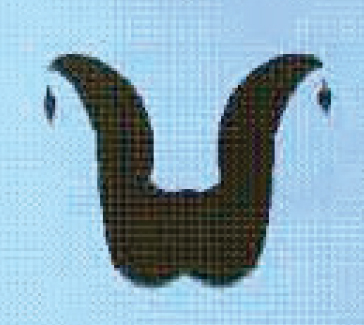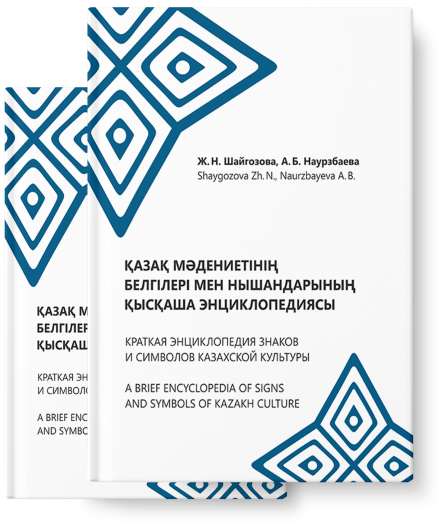
A short encyclopedia of
Signs and symbols of
Kazakh culture

Wolf/she-wolf and the representation of their body parts in the form of various patterns, amulets and fetishes are popular in Turkic culture. The world of humans and the world of wolves are interconnected in popular consciousness, as evidenced by mythological acts about the blood or milk relationship between humans and wolves.
In Western cultural tradition, the wolf/she-wolf symbolises destruction and the demonic. At the same time, in some cultures the god of war is a “wolf” god (Mars, Odin, etc.).
In the Central Asian nomadic tradition, the wolf and the she-wolf are progenitors and protectors. According to popular belief, the wolf is the worst enemy of evil forces and spirits. Therefore, wolf tusks, skin parts, bones, etc. were used as amulets for children and adults, and also used in folk medicine.
The image of the wolf is represented in various games and in rites and rituals. For example, a sick child was dragged under the fur or the mouth of a wolf. Almost until ethnographic modern times, Kazakhs have preserved the custom of displaying the wolf’s fur (pulled off with a stocking) in the most visible place in the house (usually on the tapestry). In the genealogical legends of some Turkic peoples the wolf is inseparably connected with the cult of the sun. It is believed that the sacralization of the she-wolf image occurred much earlier than that of the wolf, the former being associated with a mother cult and a land cult. The image of the male wolf strengthened in the mythopoetics of Turkic peoples with the strengthening of the role of men in nomadic society.
Traces of the veneration of this animal and its social significance are preserved not only in traditional beliefs, but also in the artistic tradition of many Turkic peoples.
The use of “wolf” motifs in one or another composition most likely meant the transmission of power and strength of the animal, and at the same time had the function of a protective spell. This motif is characteristic especially for jewellery and leather embossing.

